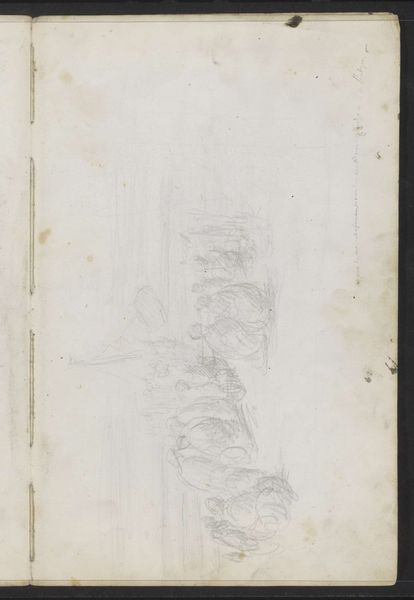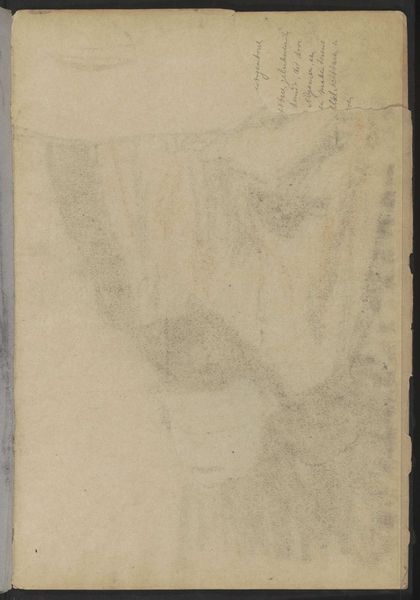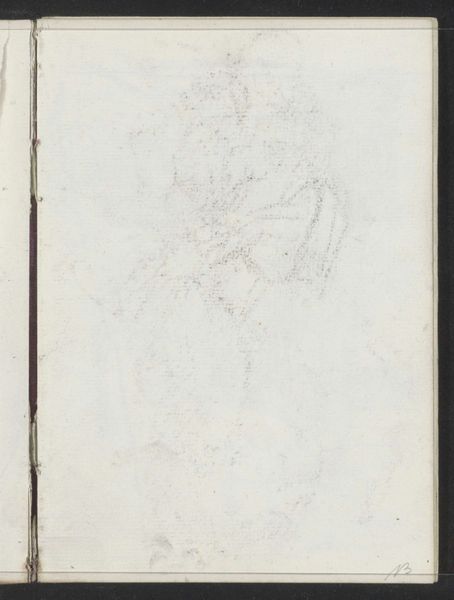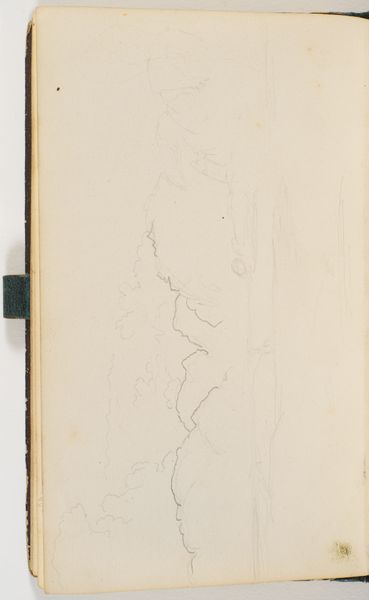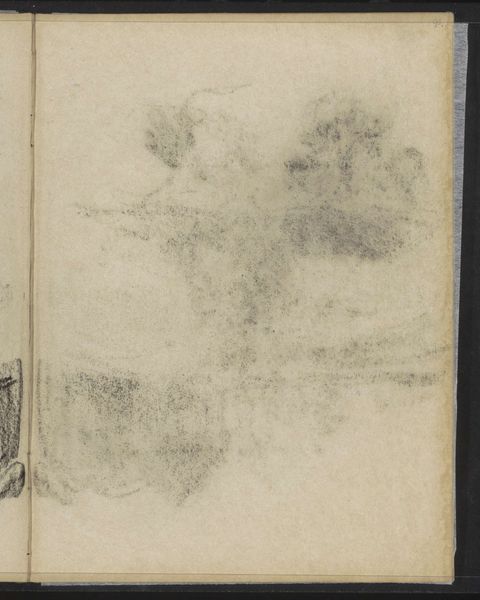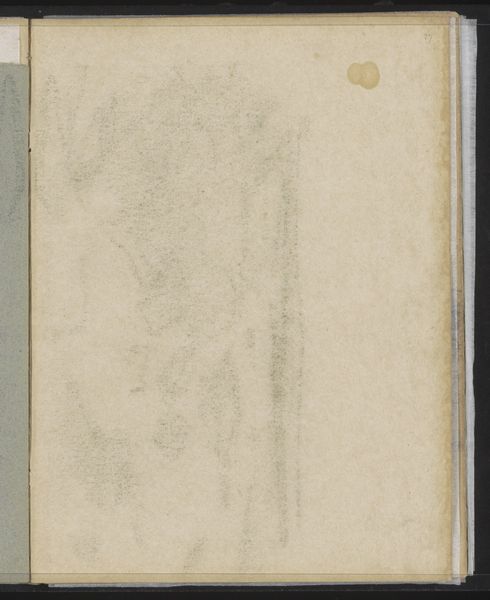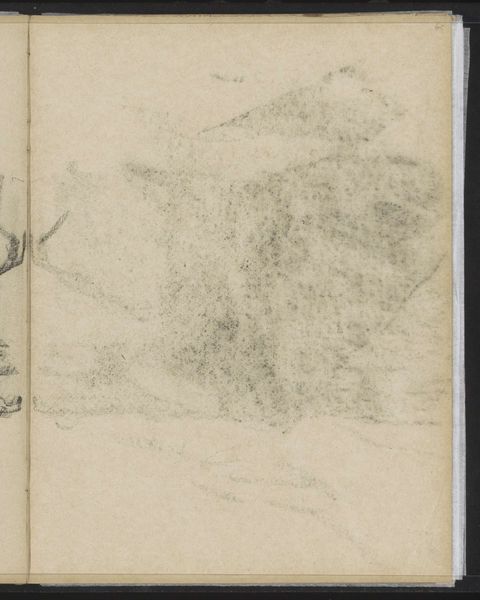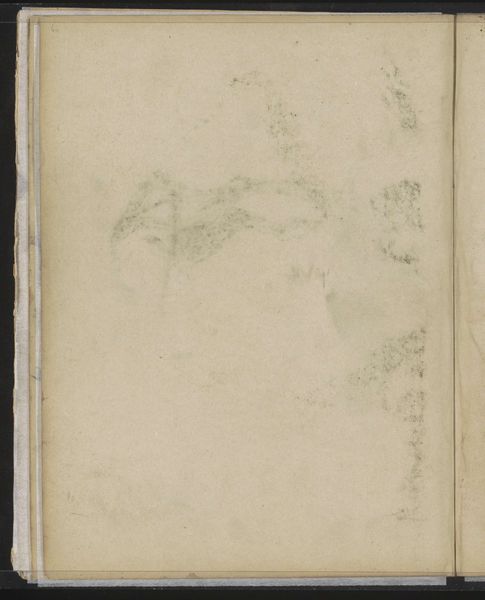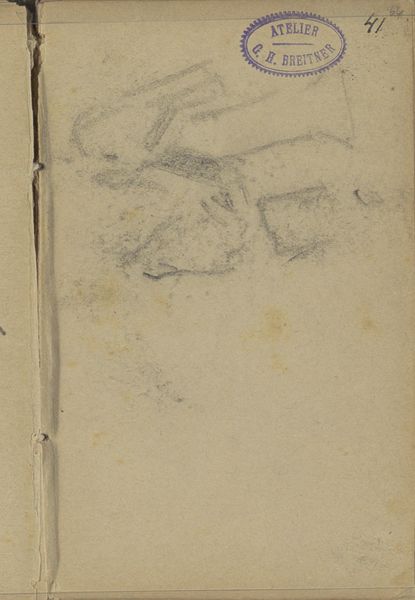
drawing, paper, graphite
#
portrait
#
drawing
#
aged paper
#
homemade paper
#
impressionism
#
sketch book
#
incomplete sketchy
#
hand drawn type
#
paper
#
personal sketchbook
#
hand-drawn typeface
#
fading type
#
graphite
#
sketchbook drawing
#
sketchbook art
Copyright: Rijks Museum: Open Domain
Curator: Willem Witsen created this fascinating work titled "Abklatsch van de tekening op het voorste schutblad," sometime between 1884 and 1891. It’s a graphite drawing on paper, part of a sketchbook. Editor: The sheer intimacy of the thing strikes me first. You can almost smell the paper; it's so close, so unfinished. Curator: The incomplete, sketchy quality speaks to Impressionism's embrace of fleeting moments. Notice how the graphite barely clings to the aged paper, a direct material embodiment of ephemeral memory. Editor: I find it poignant how the artist's hand is present not only in the strokes of graphite, but also, implied in the hand-drawn typeface barely clinging to the surface. It’s like a ghostly trace of intention. What secrets does this personal sketchbook hold? Curator: It reminds us that a sketchbook isn't merely a collection of finished works but a repository of thought processes, failed attempts, and fleeting impressions. Semiotically speaking, each mark, each erasure contributes to a layered meaning that resists singular interpretation. Editor: Precisely! Consider the very title "Abklatsch" suggesting a transfer, an impression left behind. Isn’t that what memory itself is: a faint imprint, a replica never quite matching the original? Curator: Indeed. The degradation of the image becomes central. The failing type hints to something fading away, perhaps forgotten things that continue to leave their mark. Editor: The tearing of the page seems so visceral; it almost reads as the violent act of ripping something from the past, or losing it by time or circumstances. This very incompleteness serves as a visual metaphor for the fragmented nature of recollection itself. Curator: The visual language resonates with the poetics of memory, an evocative artifactual trace of Witsen's creative life. The deliberate composition guides our view, as well, encouraging us to trace the lines again. Editor: Yes. A poignant memento mori for the digital age. It reminds me, sometimes the half-seen and half-remembered resonates far deeper than crystal-clear reality.
Comments
No comments
Be the first to comment and join the conversation on the ultimate creative platform.

